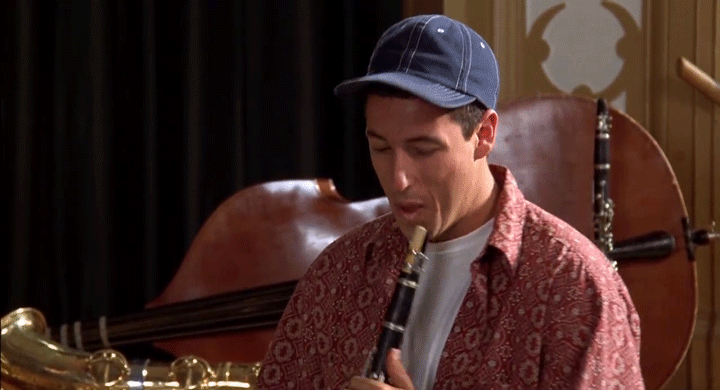There appears to be a lot of misunderstanding regarding CD-4 so thought I would try to lay out a simple technical description of how CD-4 works and obstacles to ½ speed remastering. All of this information is from JVC technical literature.
JVC engineers had two guiding principles, Compatibility and Discreteness (fully discrete 4-channel) thus the system name CD-4.
SQ, QS systems are matrix 4-2-4 systems because of the encoder/ transmission / decoder configuration. The major drawback is that interchannel crosstalk cannot be eliminated and as crosstalk increases, channel separation deteriorates. CD-4 overcame the matrix systems issues with its 4-4-4 encoder/ transmission / decoder configuration with discrete signals. (Not saying there isn’t other issues)
The four discrete signals which are recorded are:
(CH1 + CH2) Left wall, audio signal
(CH1 - CH2) Left wall, frequency modulated signal
(CH3 + CH4) Right wall, audio signal
(CH3 - CH4) Right wall, frequency modulated signal
When a CD-4 record (disc) is played on a stereo system you hear all 4 channels of recorded audio content (Compatibility). The left and right wall audio signals contain both Front and Back content, (CH1 + CH2) and (CH3 + CH4).
By providing circuitry in the CD-4 demodulator which can perform a simple algebraic operation on these signals, the four original independent signals can be obtained. (after demodulating the FM signals)
1/2 [(CH1 + CH2) + (CH1 - CH2)] = CH1, Left Front
1/2 [(CH1 + CH2) - (CH1 - CH2)] = CH2, Left Rear
1/2 [(CH3 + CH4) + (CH3 - CH4)] = CH3, Right Front
1/2 [(CH3 + CH4) - (CH3 - CH4)] = CH4, Right Rear
Frequency Modulated 30 kHz Carrier
Technically this is not an audio signal but an RF signal (RF low frequency band). Basically it is the same as an FM radio signal. The 30 kHz carrier is modulated +15 kHz and -10kHz i.e. 25 kHz audio bandwidth. The 20 to 45 kHz frequency range takes on RF electrical characteristics and requires the use of RF coax cables between turntable and CD-4 demodulator and low capacitance tone arm wiring. I have a JVC 4DD-5 I purchased new and it came with a turntable to demodulator coax cable. If you use a standard audio cable here you will have problems with the carrier signal. To further make the point that this isn’t just an audio signal the 4DD-5 user manual has a warning that playing CD-4 records too close to a TV could cause interference (RFI) in the TV. (no FIOS in the early 70s)
Modulation
For the sake of simplicity, the modulated carriers which holds the difference signal, (CH1 - CH2) and (CH3 - CH4), are referred to as "frequency modulated" but this is not entirely true; it is actually a combination of frequency modulated signals and phase modulated signals. Below 800Hz frequency modulation is used, from 800Hz to 6,000Hz phase modulation is used and then above 6,000Hz frequency modulation is again used. This takes full advantage of the nature of both these systems of modulation. There is reduced crosstalk and an improvement in the S/N in the mid, phase-modulated range and more linearity in the low and high frequency, frequency modulated, ranges.
PLL Demodulation
A Phase Locked Loop (PLL) IC in the CD-4 demodulator is used to demodulate the frequency and phase modulated 30 kHz carrier back to the audio difference signals. (Same as an FM radio receiver) The difference signals are then fed to an ANRS system.
ANRS
As ingresman mentioned in previous post JVC designed an ANRS (Automatic Noise Reduction System) to reduce noise in the FM signal. The 30 kHz carrier is recorded 19dB lower than the audio signal to avoid interference between the audio signal and the FM difference signal. This makes it susceptible to noise. The ANRS system uses variable gain amplifiers relative signal level and frequency which adds another layer of complication. The sum and difference signals must be in the proper level to each other for the algebraic operation to derive the 4 discreet outputs that match the original inputs.
Delay Circuit
The last quirk is the delay circuit. In playback, the modulated signals must be picked up 40µsec earlier than the corresponding sum signals. This is so that the demodulation process can be performed without altering the phase relationship between the sum and difference signals in playback. It is done by using a delay circuit in the sum signal's path during the cutting process. The four signals must be in the proper phase to each other for the algebraic operation on sum and difference signals to derive the 4 discreet outputs that match the original inputs.
Hope this helps and provides some insight to the complexity of CD-4.














